A Nod To Nene:
How Hawaii's Native Goose Is Returning From Near Extinction
Driving through the misty rain and afternoon sun, that rainbow-making combination that makes Kaua’i such a well-loved place, the color contrast between the lush green grass and damp red dirt lining the roadside is striking. Moving at the border between these two contrasting colors is a small group of geese, equally striking in their contrasting colors of black and buff.
Slowly making their way down the edge of the grass on the road leading to Kilauea Point National Wildlife Refuge, plucking here and there at the ends of the tallest blades and stripping seeds from stalks, five nene wander the shoulder of the road. I pull over about 20 yards up, grab my camera, and watch the meandering flock as they approach.
This is one of the few times I’ve seen nene, the goose species unique to the Hawaiian archipelago. During my two previous trips to the island I had spotted one or a couple here and there near the Kilauea Point National Wildlife Refuge. This time, however, I spied twos and threes along roads, on levees, on hillsides and in the skies. The species holds a few titles; it is Hawaii’s state bird, but it is also the most endangered goose species in the world and the sixth most endangered waterfowl species in the world. And yet, that’s not necessarily a bad thing. At least, it doesn’t have to be. The fascinating evolutionary history of the nene is rivaled by another story, that of its return from near extinction. This species was a mere 30 individuals away from being known only through the fossil record, and yet it is now poised to possibly return to self-sustaining numbers, and Kaua’i has been the place where numbers have been rising the fastest.
I sit down in the grass, my shoulder angled and eyes averted enough to encourage them to keep moving on their path toward me. Only one shows nervousness and takes a longer route around me, stopping for long moments to stare quizzically at the clicking noises I’m making as the mirror flips and the shutter flaps inside my camera. The other geese continue as if I weren’t there. I listen to them talk, making soft nasal sighs at each other, what I’ve come to call a goosey cooing. Calm and confident, they continue their grazing in the deep, lush grass.

Unlike the typical experience you might have with geese at the park or a barn yard, who move with a wariness that always borders on aggression, the nene move with a self-assured gentleness that comes with not being harassed or preyed upon for millennia. Evolving on an island chain that lacks predators results in a calm demeanor, though one that can be a species’ demise when predators do arrive. But we’ll get to that later. While the nene look so unique from other goose species, they have an ancestor who is abundant and familiar to anyone in North America.
Somewhere around 500,000 years ago, a group of Canada geese took wing and headed south and west. During their flight they spotted a small chain of islands, one of which was only just born. Here they landed, perhaps to rest, perhaps to breed. Whatever the reason, they stayed, and they began that relentless and beautiful procession of evolving to fill a niche in one’s new home.
Because there are hardly any wetlands on the Hawaiian islands, the geese evolved away from living around the edges of marshes and lakes and instead took to the grasslands and shrub-covered hills of the rocky isles, even thriving up on the rugged and rocky sides of volcanoes.
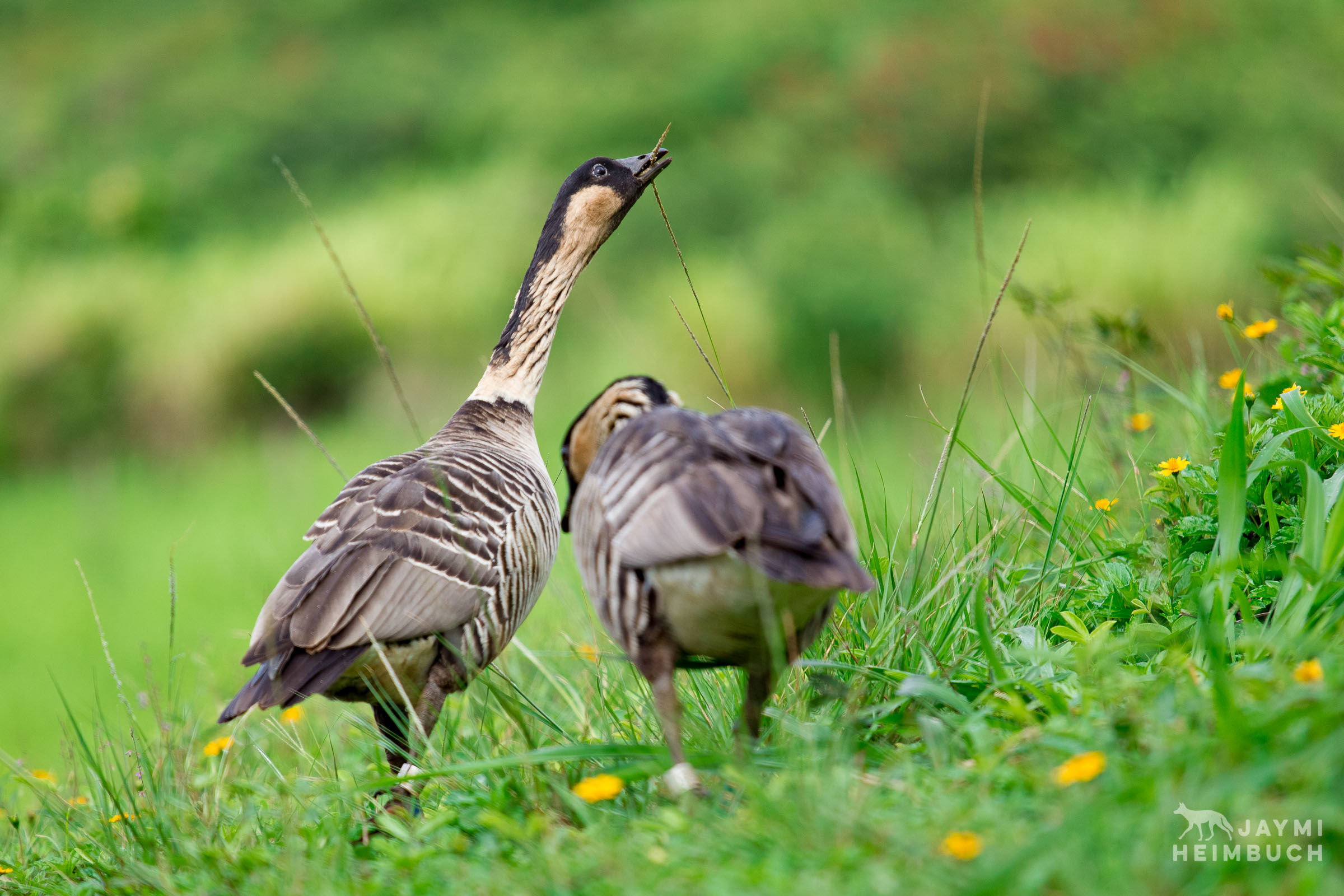
Over centuries and millennia, they became smaller and their wings shortened since they had no need to make long migration flights to warmer or cooler climes depending on the season, nor did they have much need to fly to escape land-based predators since none existed on the islands. Meanwhile, their legs lengthened and the webbing of their feet shrank as they swam less and scrambled over lava rock beds more. Perhaps the most notable change is their coloration. Doing away with the all-black neck and hood, the nene evolved a signature buff-colored neck with a black stripe down the back and deep furrows of black within the buff along the sides of the neck.
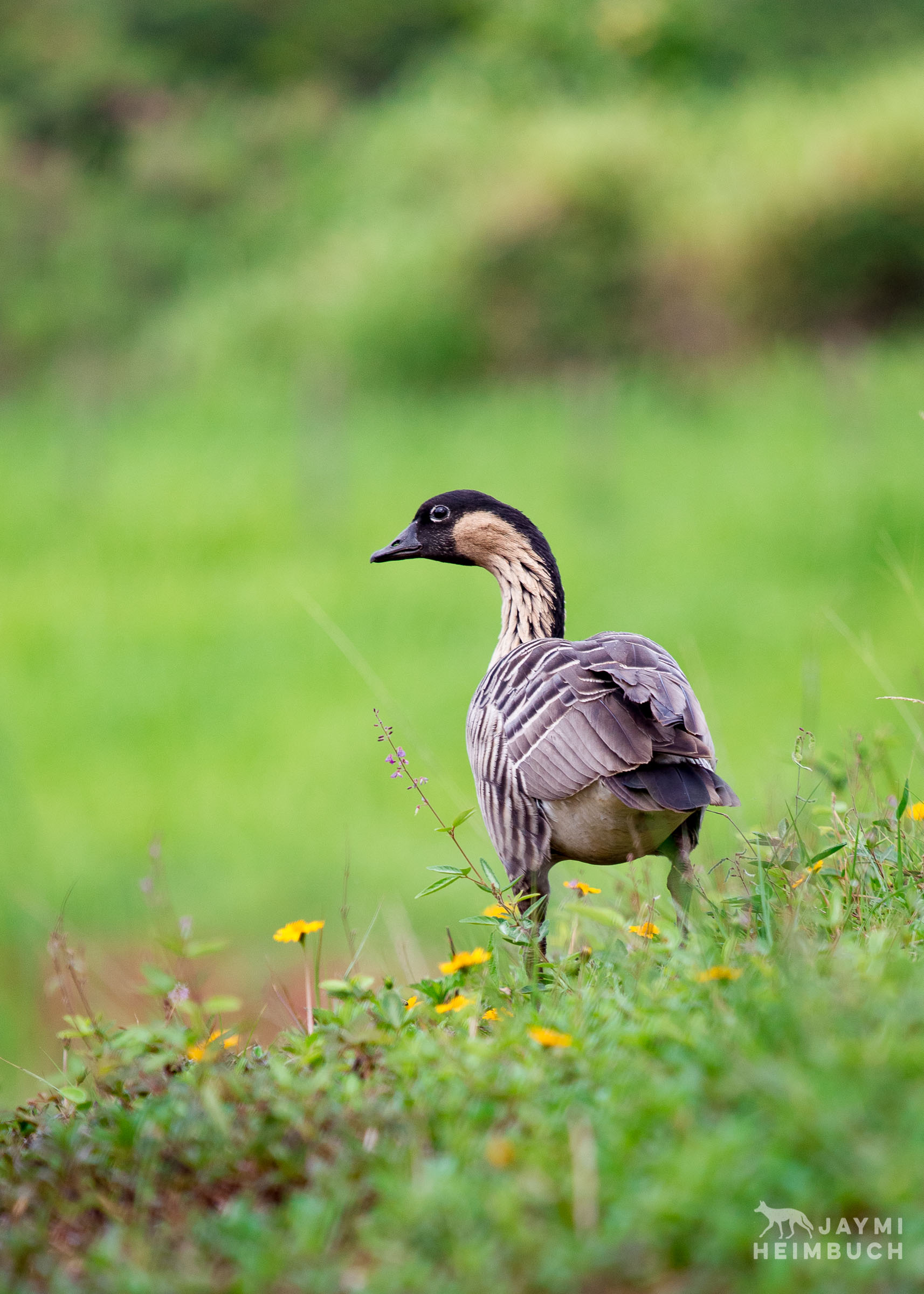
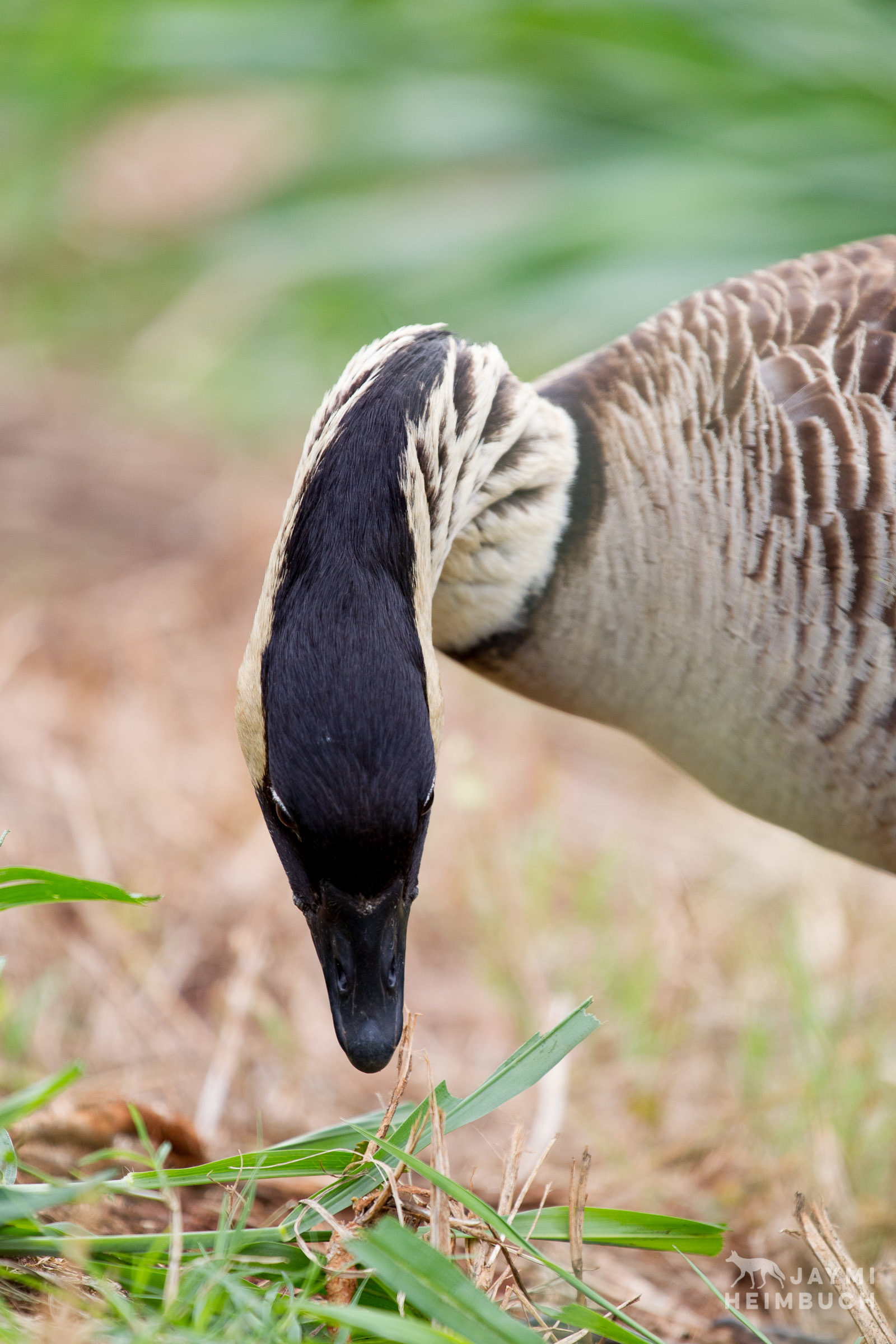
Nene forage everywhere from coastal lowlands to rugged hillsides. Their preferred habitat has an abundance of native plants and grasses. Their unique markings them easy for anyone to identify in an instant.
The nene was not the only goose species to evolve from the Canada goose ancestors. Several other species evolved, though they went extinct quite some time ago. The nene is the only species left to demonstrate what has occurred in the half-million or more years since those ancestors landed on the archipelago. Now, it is the most isolated, and one of the most threatened of all waterbirds.
While the nene evolved on an archipelago that was free of land-based predators, that Eden didn’t last. Eventually, humans discovered the islands. Though the people who became native Hawaiians did hunt nene to some extent and introduced predators including dogs and pigs, it is estimated that the nene still numbered around 25,000 on the Big Island alone when Captain Cook landed in 1778. But when the westerners arrived, hunting and egg collection, as well as even more introduced predators including cats and mongoose, all took a devastating toll. Hunting nene was finally banned in 1907, but the damage was done. By the time conservation efforts began in earnest, there were only around 30 nene left in the entire world, all on the island of Hawaii.
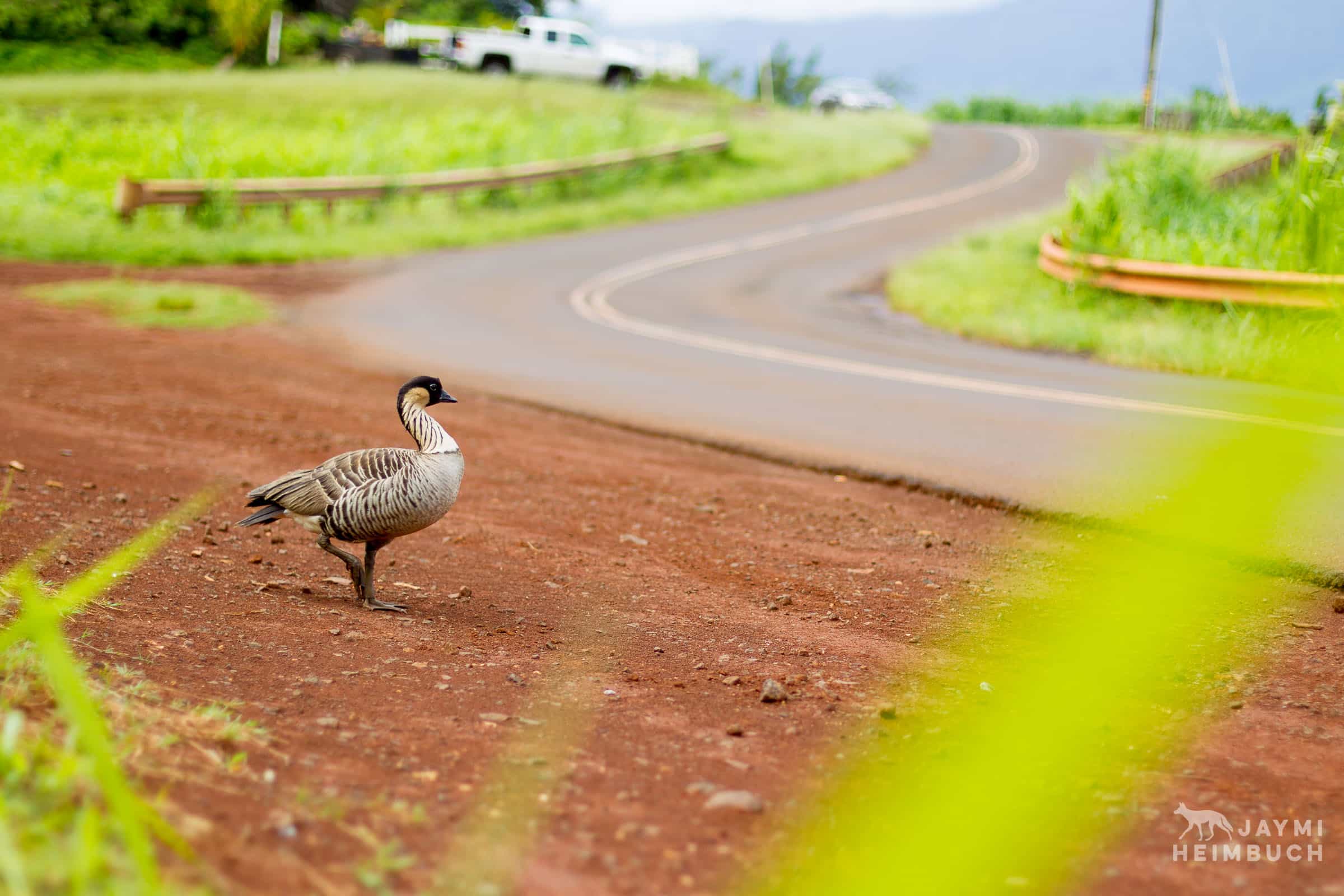
The captive breeding program began in 1949 when the last 30 wild nene were captured, representing the only hope of the species’ survival. However, the program focused primarily on breeding and release, and not on habitat restoration and protection. It is difficult to find success with the former if the later is neglected. So, the nene released back into the wild struggled to thrive. After several decades, more research was focused on figuring out how to help the nene become self-sustaining once again.
Looking into issues of habitat degradation, food shortages, predation by non-native mammals, and other factors all helped the captive breeding program identify strategies for success in later years. Since the breeding program began, over 2,800 nene have been released on four islands. Some populations still require supplemental feeding to get through the lean times, but the population of nene on Kaua’i — accidentally released there after Hurricane Iwa in 1982 — have found particular success, thriving in the lush lowlands and on the edges of pastureland where they enjoy plenty of food and far less pressure from predators.
Though more than 60 years have passed since captive breeding programs began, and nene now number around 2,500 total, the nene living wild on the Hawiian islands are still not self-sustaining. New individuals born in the breeding programs still need to be introduced to the wild to keep populations on the rise. However, there is encouraging progress being made in recent years. The nene may have the smallest range of any living goose species, but it is beginning to make use of that range once again. Not only is Kaua’i showing a rapid growth in numbers, but for the first time in 300 years, a pair of wild nene have nested and hatched young on the island of Oahu.
In March of 2014, news broke that a pair of nene set up home at the James Campbell National Wildlife Refuge, and successfully hatched three of their four eggs. The mild-mannered pair were first spotted in January hanging out at the 5th hole at a golf course, wandering up to visitors close enough for their bands to identify them as K59 and K60, which means they are from Kaua’i. By mid-March, they revealed their three goslings. It was expected that when the goslings were big enough to fly, they would likely return to Kaua’i. But they provided high hopes that wild-born nene will return permanently to Oahu, coming back after centuries of extirpation.
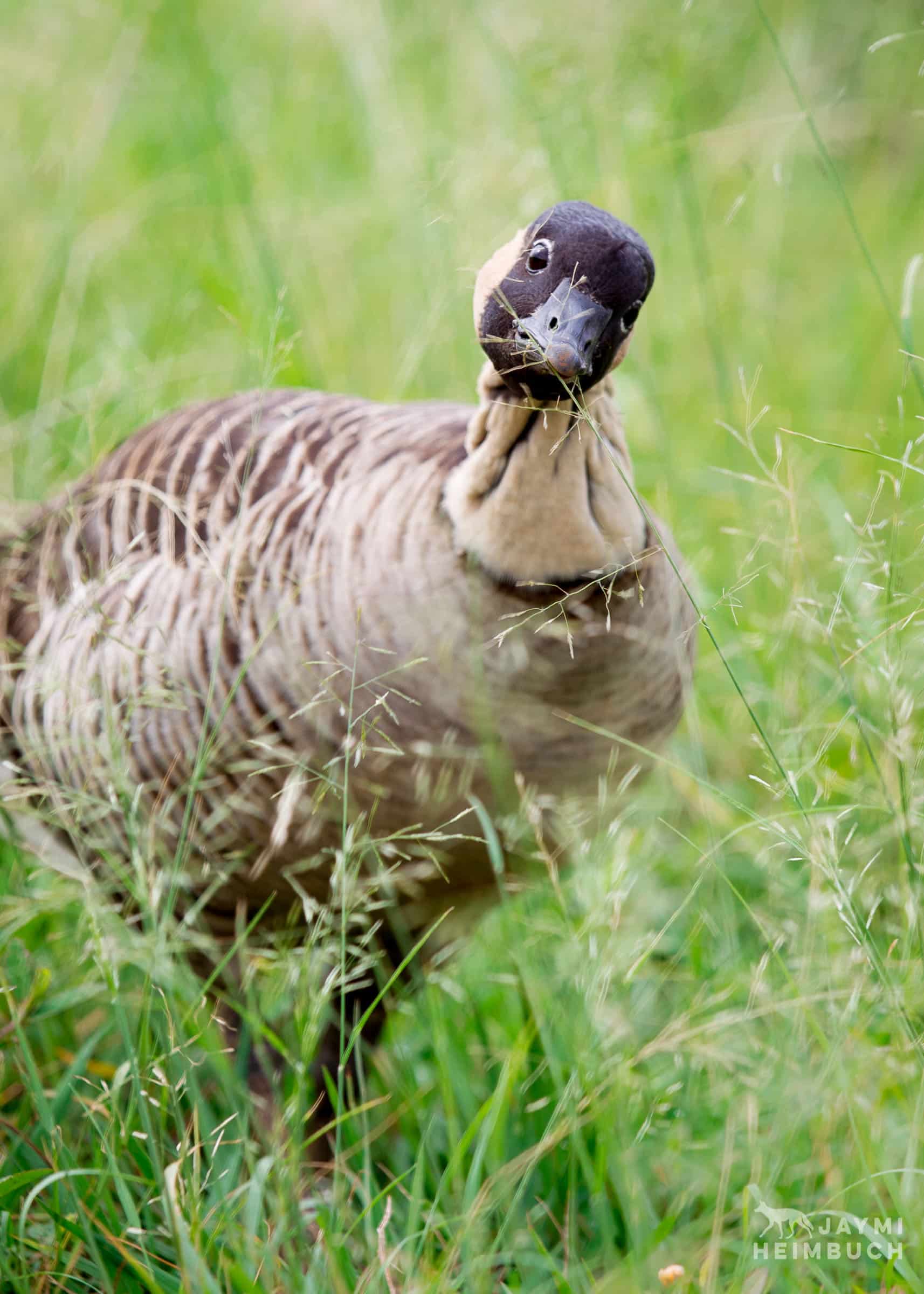

Food shortages are a primary problems for establishing a toe-hold in historic ranges. Because the Big Island offers habitat primarily up in the high elevations where food is less abundant, nene come down to the lower grasslands to feed and nest, but this makes them more susceptible to predation. Kauai’s nene population is the exception. It is growing the most rapidly and it is likely due in large part to the abundance of grassland and the fact that the island is mongoose-free. Predation on the islands is most serious for goslings who cannot fly until they are several months old, while car-strikes of adults feeding along roadsides is one of the biggest threats to adult nene.
Because the species survival is so tied into the availability of grasses — which is affected by human development as well as the spread of non-native species choking out the native grasses and plants — and predation, conservation efforts still need to revolve around protecting prime habitat, making it safe for nene geese to nest and providing plenty of food for foraging.
Currently, the only wild nene on the archipelago are found on the islands of Hawaii, Maui, Kaua’i and Molokai — and of course the pair that showed up this year on Oahu. Perhaps, with time and continued dedication, more than the single breeding pair will return to Oahu while numbers of nene thriving in the wild on their other native islands continue to rise.
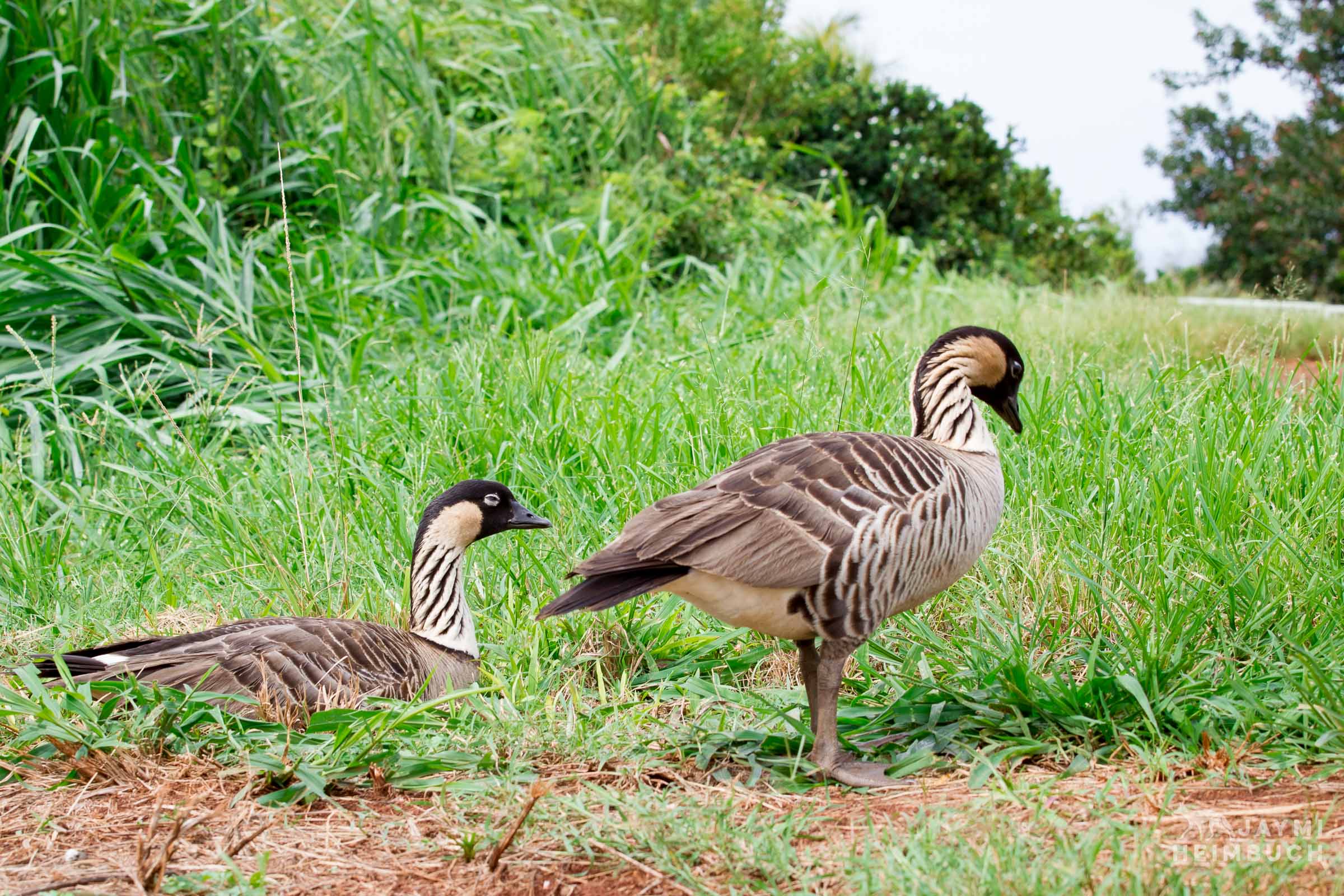
A pair of nene break off and cross the road to forage. I quietly follow them, staying a good distance away but in the direction they are traveling, and sit down in the grass. They wander closer, pulling at the blades of grass left and right and making their low calls to each other. The calls sound like they swallowed a harmonica and are softly sighing through it. They eventually get within about ten feet of me, to a spot where the grass is low and thin. They take turns resting and grazing. One hunkers down and naps while the other keeps watch, nibbling on grass or stretching. Then the one that was resting rises, coos at the other a few times and begins to graze, and the other lowers itself down to the ground for its turn at 40 winks.
Though these nene are well habituated to humans, it still feels like a small honor to be trusted by them enough to have them nodding off next to me, taking long yoga-pose stretches with their back legs and talking softly to each other without a care in the world. We sink into a meditative calm together. A familiar honking sounds in the distance and gets closer, and the two geese cock their heads to look up, watching a flock of five nene fly overhead. The pair vocalize, talking to each other with a little more excitement about whoever just flew by above us. Which of them are related, which are youngsters and which have been here for a decade or more? To think all of them came from some 30 or so individuals captured around a century ago, the last of their kind brought into safety with the hopes that they would once again thrive across the Hawaiian islands. To think, they are on the cusp of returning in earnest, and these geese on Kaua’i show the most promise for the species as a whole — a species perhaps, just maybe, saved from extinction. In an era with few success stories, the nene offer us a truly special dose of hope.
Their gossiping done, the two geese settle down again, eventually both of them lying down to take an afternoon nap. I replace my lens cap, and leave them to their quiet island paradise.
Originally published November 2014
[mashshare]

